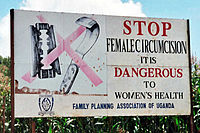
Photo from wikipedia
Abstract The design of optimal courses for obstetric undergraduate teaching is a relevant question. This study evaluates two different designs of simulator-based learning activity on childbirth with regard to respect… Click to show full abstract
Abstract The design of optimal courses for obstetric undergraduate teaching is a relevant question. This study evaluates two different designs of simulator-based learning activity on childbirth with regard to respect to the patient, obstetric manoeuvres, interpretation of cardiotocography tracings (CTG) and infection prevention. This randomised experimental study which differs in the content of their briefing sessions consisted of two groups of undergraduate students, who performed two simulator-based learning activities on childbirth. The first briefing session included the observations of a properly performed scenario according to Spanish clinical practice guidelines on care in normal childbirth by the teachers whereas the second group did not include the observations of a properly performed scenario, and the students observed it only after the simulation process. The group that observed a properly performed scenario after the simulation obtained worse grades during the simulation, but better grades during the debriefing and evaluation. Simulator use in childbirth may be more fruitful when the medical students observe correct performance at the completion of the scenario compared to that at the start of the scenario. Impact statement What is already known on this subject? There is a scarcity of literature about the design of optimal high-fidelity simulation training in childbirth. It is known that preparing simulator-based learning activities is a complex process. Simulator-based learning includes the following steps: briefing, simulation, debriefing and evaluation. The most important part of high-fidelity simulations is the debriefing. A good briefing and simulation are of high relevance in order to have a fruitful debriefing session. What do the results of this study add? Our study describes a full simulator-based learning activity on childbirth that can be reproduced in similar facilities. The findings of this study add that high-fidelity simulation training in childbirth is favoured by a short briefing session and an abrupt start to the scenario, rather than a long briefing session that includes direct instruction in the scenario. What are the implications of these findings for clinical practice and/or further research? The findings of this study reveal what to include in the briefing of simulator-based learning activities on childbirth. These findings have implications in medical teaching and in medical practice.
Journal Title: Journal of Obstetrics and Gynaecology
Year Published: 2018
Link to full text (if available)
Share on Social Media: Sign Up to like & get
recommendations!